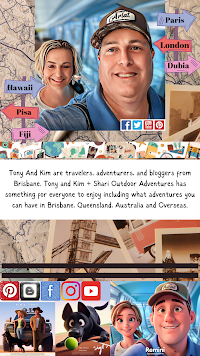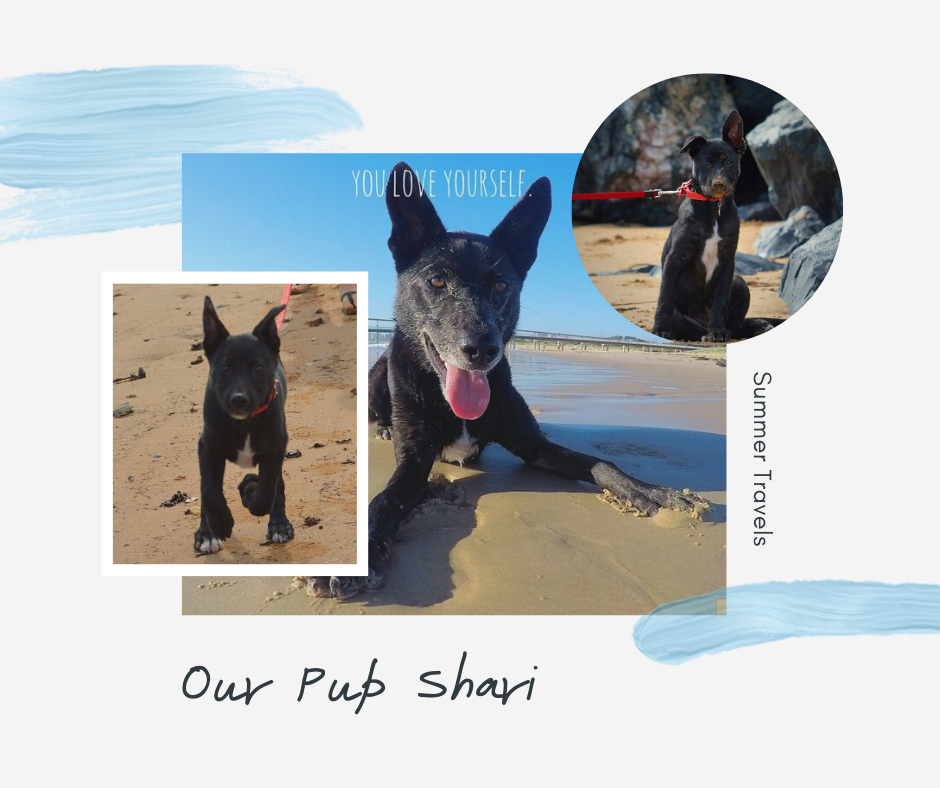https://youtu.be/eF9Cak9xvq0
Our European Tour Madrid
https://youtu.be/eF9Cak9xvq0
 Tony And Kim are Travelers, Adventurers, and Bloggers from Brisbane. Tony & Kim + Shari Outdoor Adventures has something for everyone to enjoy including what adventures you can have in Brisbane, Queensland, Australia and Overseas. One thing’s for sure: once you start browsing our blog, you’ll be booking annual leave before you can say “bucket and spade”.
While we don’t identify ourselves as writers, We've always been travelers. From a young age, we both were given the opportunity to travel and spend countless hours on family road trips & vacations to what seemed, at the time, distant places.We got our first taste of traveling as a couple in Palm Cove, Queensland on our Honeymoon and learned about each others same passion.We are not writers, so why blog? It’s a commitment to ourselves that holds us accountable. It’s the home for our Adventure Stories. We want this blog to inspire you, to inform you and to add fuel to your Wanderlust. We hope you’ll join us on this adventure!
Tony And Kim are Travelers, Adventurers, and Bloggers from Brisbane. Tony & Kim + Shari Outdoor Adventures has something for everyone to enjoy including what adventures you can have in Brisbane, Queensland, Australia and Overseas. One thing’s for sure: once you start browsing our blog, you’ll be booking annual leave before you can say “bucket and spade”.
While we don’t identify ourselves as writers, We've always been travelers. From a young age, we both were given the opportunity to travel and spend countless hours on family road trips & vacations to what seemed, at the time, distant places.We got our first taste of traveling as a couple in Palm Cove, Queensland on our Honeymoon and learned about each others same passion.We are not writers, so why blog? It’s a commitment to ourselves that holds us accountable. It’s the home for our Adventure Stories. We want this blog to inspire you, to inform you and to add fuel to your Wanderlust. We hope you’ll join us on this adventure!
Featured post
Sleepy Town Of Bowen North Queensland
Christmas Road Trip to Sleepy Town Bowen, North Queensland. Australia This Christmas we took the Great Queensland Getaway, and hit the hig...

Popular Posts
-
Beach vibes only. One of our best day trips from Brisbane is Kingscliff. We Brisbane locals like to keep Kingscliff a secret! It’s a perfe...
-
NORWEGIAN JEWEL NEW ZEALAND CRUISE – THIRD PORT NAPIER Day six of the cruise and we sailed into the port of Napier, calm seas, lit...
-
Exploring Lyttelton on Our P&O New Zealand Cruise Our fifth port of call on the P\&O New Zealand Cruise brought us to the charmi...
-
Grand European Tour Pisa, Italy Vistas of undulating hills, rows of cypress trees, terraced vineyards, olive groves, and rural v...
-
Barcelona is filled with lively flamenco shows and an abundance of delicious tapas restaurants to fill up your evening . Flamenco is...
-
Grand European Tour Assisi Assisi is very touristy but still full of charm and wonderful moments if you know where to look. An i...
-
NORWEGIAN JEWEL NEW ZEALAND CRUISE – SECOND PORT TAURANGA Some great night time entertainment had us sleeping in and missed passing s...
-
“Instead of wandering when your next vacation is, maybe you should set up a life you don’t need to escape from.” NORWEGIAN JEWEL NEW Z...
-
Road Trip Brisbane To Sydney Part II Chatswood Five and a half hours on the M1 we hit out designation, situated 10 kilometres nort...
-
NORWEGIAN JEWEL NEW ZEALAND CRUISE – FORTH PORT WELLINGTON Another calm night, we arrived in Wellington day seven early, a little hi...
Blog Disclaimer
This is a personal blog. Any views or opinions represented in this blog are personal and belong solely to the blog owner and do not represent those of people, institutions or organizations that the owner may or may not be associated with in professional or personal capacity, unless explicitly stated. Any views or opinions are not intended to malign any religion, ethnic group, club, organization, company, or individual.
Disclaimer
©Tony&KimOutdoorAdventures.
Unauthorized use and/or duplication of this material without express and written permission from this site’s author and/or owner is strictly prohibited. Excerpts and links may be used, provided that full and clear credit is given to Tony&KimOutdoorAdventures with appropriate and specific direction to the original content.

Events
About Us

SEARCH
Blog Archive
-
▼
2015
(27)
-
▼
November
(16)
- QUEENSLAND OUTBACK ROAD TRIP, AUSTRALIA
- SINGAPORE
- Grand European Tour Paris, France
- Grand European Tour Orleans France
- Grand European Tour Bordeaux To Poitiers
- Grand European Tour Burgos To Bilbao
- Our European Tour Madrid
- Grand European Tour Barcelona
- Grand European Tour French Riviera Avignon to Carc...
- Grand European Tour French Riviera Eze To Monaco a...
- Grand Europe Tour: Exploring the Renaissance Beaut...
- Grand European Tour Pisa
- Grand European Tour Rome
- Grand European Tour Assisi
- Grand European Tour Venice
- Grand European Tour Verona
-
▼
November
(16)

Our Top Camping and Holiday Parks Listings

























.png)









No comments:
Post a Comment